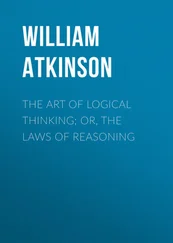Persons of this temperament are apt to be more or less "intense;" enjoy and suffer keenly; are sensitive to reproach or criticism; are inclined to be sedentary; take a pleasure in "thinking," and often burn their candle of life at both ends, because of this tendency; and incline to occupations in which their brains rather than their body is exercised. They may be either of dark or of light complexion, and in either case are apt to have bright, expressive eyes. The impression created by an examination of their physical characteristics is that of sharpness . The fox, weasel, greyhound, and similar animals illustrate this type. Persons of this temperament are apt to be either very good or very bad. They run to extremes, and sometimes execute a quick "right about face." When properly balanced, this temperament produces the world's greatest thinkers along all lines of thought. When not properly balanced it produces the abnormally gifted "genius," between whom and the unbalanced person there is but a slender line of division; or the eccentric person with his so-called "artistic temperament," the "crank" with his hobbies and vagaries, and the brilliant degenerate who dazzles yet horrifies the world.
The best authorities agree in the belief that the Balanced Temperament is the most desirable. That is, the condition in which the three temperaments balance each other perfectly, so that the weak points of each are remedied by the strong points of the others, and the extremes of each are neutralized and held in check by the influence of the others. Prof. O. S. Fowler, the veteran phrenologist says upon this point: "A well balanced organism, with all the temperaments large and in about equal proportion, is by far the best and most favorable for both enjoyment and efficiency; to general genius and real greatness; to strength along with perfection of character; to consistency and power throughout. The Motive large, with the Mental deficient, gives power with sluggishness, so that the powers lie dormant; adding large Vital gives great physical power and enjoyment, with too little of the Mental and the moral, along with coarseness; while the Mental in excess creates too much mind for body, too much exquisiteness and sentimentality for the stamina, along with a green-house precocity most destructive of life's powers and pleasures; whereas their equal balance gives abundance of vital force, physical stamina, and mental power and susceptibility. They may be compared to the several parts of a steamboat and its appurtenances. The Vital is the steam-power; the Motive, the hulk or framework; the Mental, the freight or passengers. Predominant Vital generates more vital energy than can well be worked off, which causes restlessness, excessive passion, and a pressure which endangers outbursts and overt actions; predominant Motive gives too much frame or hulk, moves slowly, and with weak Mental, is too light-freighted to secure the great ends of life, predominant Mental overloads, and endangers sinking; but all equally balanced and powerful, carry great loads rapidly and well, and accomplish wonders. Such persons unite cool judgments with intense and well-governed feelings; great force of character and intellect with perfect consistency; scholarship with sound common sense; far seeing sagacity with brilliancy; and have the highest order of both physiology and mentality."
Professor Nelson Sizer, another high authority said: "In nature the temperaments exist in combination, one being, however, the most conspicuous. So rarely do we find examples of an even mixture or balance, that it may be said that they who possess it are marvellous exceptions in the current of human society. Such an even mixture would indicate a most extraordinary heritage; it would be constitutional perfection. But, once in a while, a person is met in whom there is a close approach to this balance, and we are accustomed to speak of it as a balanced temperament, it being difficult to determine which element is in predominance."
The experience of the older phrenologists, which is verified by the investigations of the later authorities, was that in the majority of persons two of the temperaments are well developed, the third remaining comparatively undeveloped. Of the two active temperaments, one is usually found to be predominant, although in many the two are found to be almost equally developed. But even in the last mentioned instance one of the two seems to have been more actively called forth by the environment of the person, and may therefore be regarded as the ruling temperament. Arising from this fact we find the several classes of Mixed Temperament, known, respectively, as: the Vital-Motive; the Motive-Vital; the Motive-Mental; the Mental-Motive; the Vital-Mental; and the Mental-Vital. In these classes the name of the predominant, or most active temperament appears first, the second name indicating the temperament relatively undeveloped or inactive.
The Vital-Motive and the Motive-Vital temperaments give the combination in which is manifested physical activity and strong vitality. Those of these temperaments are adapted to out-of-door work, such as farming, out-of-door trades, mechanics, soldiers and sailors, and other occupations requiring strong vital power and muscular strength and activity. The physical characteristics are the prominent bones and strong muscles of the Motive, and well-rounded limbs and "stout" forms of the Vital. When the Vital predominates, there is apt to be more flesh; when the Motive predominates there is apt to be more ruggedness and muscular development.
The Motive-Mental and Mental-Motive temperaments give the combination in which is manifested the physical activity of the Motive and the mental activity of the Motive and the mental activity of the Mental—the physical and mental characteristics of the Vital being absent. The Mental element relieves the Motive of some of its crudeness and roughness, while the Motive relieves the Mental of its tendency to get away from the practical side of things. The strong frame and muscles are balanced by the brain-development. Those of this temperament make good practical business men, physicians, lawyers, scientists, explorers, and others who have to work and think at the same time. These people often manifest great executive ability. When the Motive predominates, the tendency is toward out-of-door occupations in which the brain is used in connection with bodily activity. When the Mental predominates there is a tendency toward in-door occupations in which active brain work is required. These people have well-developed heads, together with wiry, strong bodies. Some of the most successful men have come from this class.
The Vital-Mental and Mental-Vital temperaments give the combination in which is manifested many attractive traits which render their possessor agreeable, companionable, and at the same time bright and intelligent. The Vital element gives a plumpness to the form, while the Mental imparts a brightness to the mind. This is the temperament of many attractive women. The Mental activity tends to counterbalance the Vital tendency toward physical ease and comfort. These people make good orators, after dinner speakers, and agreeable society men and women, actors, artists, poets, and popular literary men. The respective predominance of the Mental or the Vital, in this combination, gives to this class somewhat of a variety, but a little observation will soon enable one to recognize the individuals belonging to it. A certain combination in this class produces the trait of "emotionality," or superficial feeling and sympathy.
The student of Human Nature should pay much attention to Temperament and the outward indications of each class and sub-class, for Temperament gives us much of our best information regarding character and disposition, in fact Character Reading depends materially upon the interpretation of Temperament.
Читать дальше












